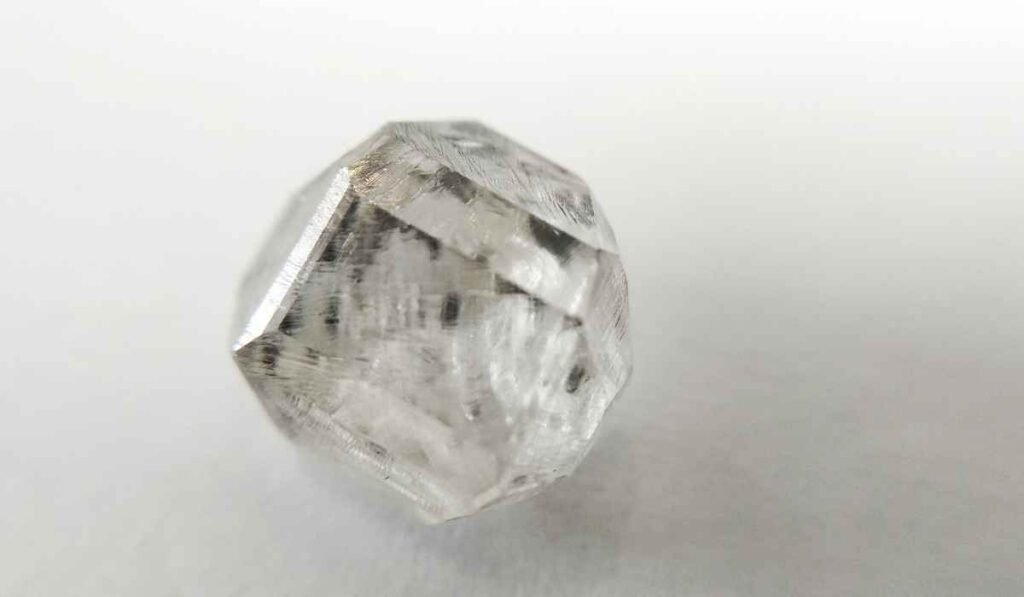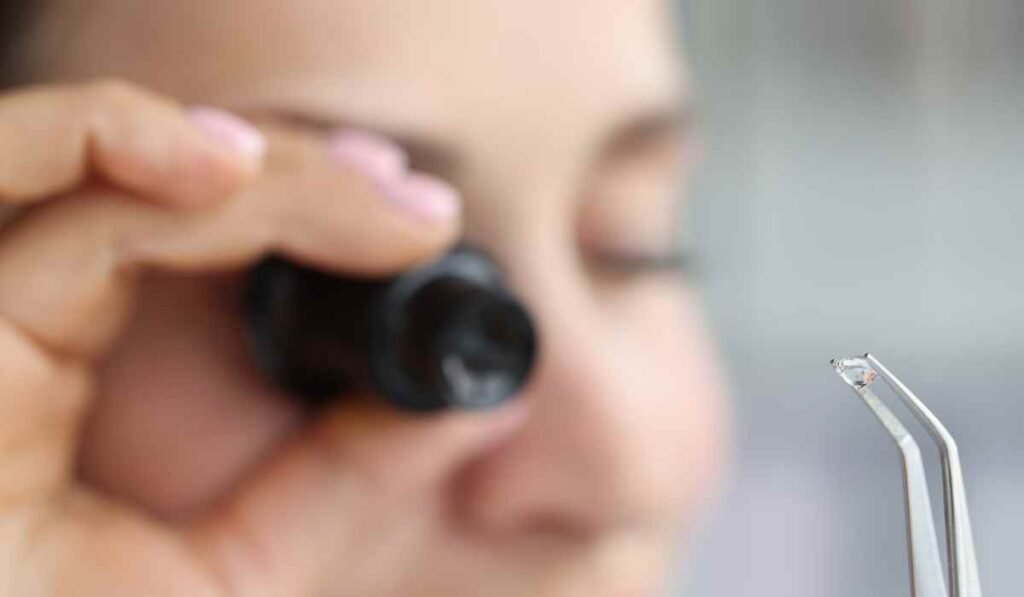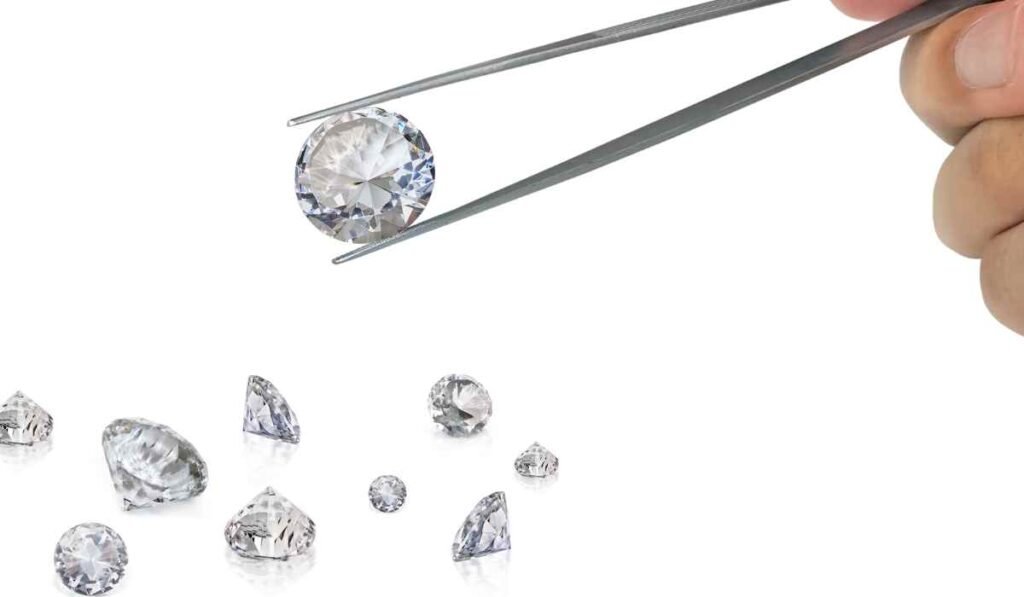Diamonds have always been a symbol of luxury, but have you ever wondered how lab grown diamonds are made? This post will take you on a journey through the intricate process, revealing the science and ethical considerations behind these synthetic gems.
Table of Contents
ToggleWhat are Lab Grown Diamonds?
Lab grown diamonds, also known as synthetic diamonds, are artificially created gemstones with the same physical and chemical properties as natural diamonds. Their popularity is on the rise due to ethical considerations and environmental sustainability.

Diamond Formation in Nature vs. Lab
Natural diamonds form deep within the Earth’s mantle over millions of years through intense heat and pressure. In contrast, lab grown diamonds are produced in controlled environments, replicating the conditions that lead to diamond formation in nature but at an accelerated pace.
Methods of Growing Lab Grown Diamonds
Lab-grown diamonds start their journey as tiny seeds, often a small piece of natural diamond. These seeds are placed in high pressure chambers. Under extreme conditions, carbon atoms start to crystallize layer by layer, forming the structure of a diamond.
There are two primary methods for growing lab grown diamonds:
- Chemical Vapor Deposition (CVD)
- High Pressure High Temperature (HPHT).
Both methods involve manipulating carbon atoms to create diamond crystals.
Chemical Vapor Deposition (CVD):
CVD is a cutting-edge method for lab-grown diamonds. It entails exposing a diamond seed in a vacuum chamber to methane gas, with carbon atoms gradually depositing layer by layer onto the seed. This process mirrors the natural diamond growth at lower pressure and temperature.
Overview of the Chemical Vapor Deposition (CVD) Process:
- A diamond seed is placed in a vacuum chamber.
- Methane gas is introduced into the chamber.
- The methane is heated, and the carbon atoms separate from the methane and fall onto the diamond seed, layer by layer, creating a diamond.
- This process occurs at lower pressure and temperature compared to HPHT.
High Pressure High Temperature (HPHT):
HPHT diamonds are created by replicating the intense conditions found deep within the Earth’s mantle. This process involves subjecting a seed diamond to extreme pressure and temperature, resulting in the formation of a new diamond around the seed.
Overview of the High Pressure High Temperature (HPHT) Process:
- A small seed diamond (natural or synthetic) is placed in a high-pressure press.
- Carbon source material, usually graphite, is also placed in the press.
- The press subjects the materials to extreme pressure (around 725,000 pounds per square inch) and high temperatures (about 2,200 degrees Celsius).
- The carbon melts and dissolves, forming a diamond around the seed crystal.

Post-Growth Processing
After initial growth, lab grown diamonds undergo post-processing steps, including
- Cutting and Polishing
- Quality Control & Certification
These processes enhance the diamond’s brilliance, shape, and overall appearance, making it suitable for use in jewelry.
Cutting and Polishing
Once the diamond reaches the desired size, it undergoes the cutting and polishing phase. Expert craftsmen shape the diamond with precision, revealing its unique brilliance. This stage requires skill and artistry to bring out the best in each gem.
Quality Control and Certification
Ensuring the quality of lab grown diamonds is crucial. They undergo rigorous quality control measures, including grading for color, cut, clarity, and carat weight. Certification from recognized gemological laboratories validates the authenticity and quality of the diamonds.
Why Lab-Grown Diamonds?
- Ethical Sourcing: Lab-grown diamonds are conflict-free, eliminating concerns associated with traditional diamond mining.
- Environmental Impact: The environmental footprint of lab-grown diamonds is significantly lower compared to mined diamonds.
- Quality Control: Controlled conditions in the lab ensure consistent quality and purity.
Natural Diamond Vs. Lab Grown Diamond
Natural diamonds, formed deep within the Earth over millions of years, have long been treasured for their rarity and unique journey to the surface.
On the other hand, lab-grown diamonds, a modern innovation, are crafted in controlled environments using advanced techniques.
The comparison between these two types of diamonds unveils distinct characteristics that cater to different preferences and considerations.
| Characteristic | Natural Diamonds | Lab-Grown Diamonds |
|---|---|---|
| Formation Process | Formed deep within the Earth’s mantle over millions of years under high pressure and temperature. | Created in controlled environments using High Pressure High Temperature (HPHT) or Chemical Vapor Deposition (CVD) methods. |
| Origin | Mined from natural deposits. | Produced in laboratories. |
| Inclusions | May contain natural inclusions and imperfections. | Typically fewer inclusions, and clarity can be controlled during the manufacturing process. |
| Cost | Generally more expensive due to rarity and mining costs. | Often more affordable, as production costs are lower. |
| Size and Availability | Limited by natural occurrences, sizes vary. | Can be produced in larger sizes and quantities with consistency. |
| Environmental Impact | Mining can have environmental consequences. | Generally considered more environmentally friendly as it reduces the need for mining. |
| Certification | Graded by gemological institutes based on the 4Cs (cut, color, clarity, carat). | Also graded based on the 4Cs, but may have additional identification as lab-grown. |
| Popularity | Traditional choice with historical and cultural significance. | Gaining popularity as a sustainable and ethical alternative. |
| Market Perception | Perceived as rare and precious. | Increasing acceptance, especially for ethical and sustainable reasons. |
| Physical and Chemical Properties | Identical to natural diamonds. | Virtually identical, but may have differences in growth features detectable with advanced testing. |
As illustrated in the differences table, natural diamonds bear the hallmark of geological processes, displaying a wide range of sizes, colors, and inclusions. Their scarcity and historical significance contribute to their perceived value.
Lab-grown diamonds, produced through methods like High Pressure High Temperature (HPHT), and Chemical Vapor Deposition (CVD), offer a sustainable and ethical alternative. These diamonds can be created with specific characteristics, providing consumers with more choices.

Here are some of the commonly asked questions:
Are lab-grown diamonds real diamonds?
Yes, absolutely! Lab-grown diamonds possess the same physical, chemical, and optical properties as mined diamonds.
How long does it take to grow a lab-grown diamond?
The growth process varies, but it generally takes a few weeks to a few months to create a fully developed lab-grown diamond.
Are lab-grown diamonds more affordable than mined diamonds?
Indeed, they are. The streamlined production methods often make lab-grown diamonds a more budget-friendly option.
Do lab-grown diamonds have flaws?
Just like mined diamonds, lab-grown diamonds can have inclusions. However, advancements in technology have significantly reduced these imperfections.
Are lab-grown diamonds ethical?
Absolutely. Lab-grown diamonds eliminate the ethical concerns associated with traditional diamond mining, offering a guilt-free sparkle.
Are lab-grown diamonds sustainable?
A: Yes, lab-grown diamonds have a lower environmental impact, making them a more sustainable choice.
Conclusion
Lab grown diamonds represent a sustainable, ethical, and technologically advanced alternative to natural diamonds. Understanding the processes involved, from growth to post-processing, sheds light on their environmental benefits and positive impact on the jewelry industry. Choosing lab grown diamonds aligns with the growing demand for responsible and conscious consumer choices.
